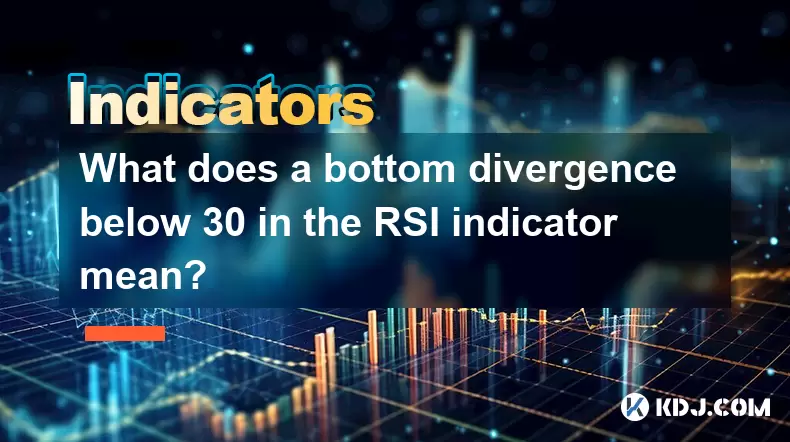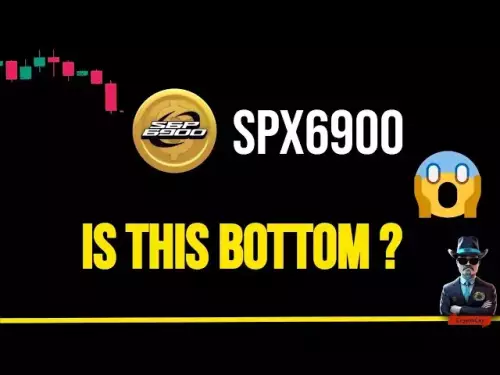-
 Bitcoin
Bitcoin $112600
-2.20% -
 Ethereum
Ethereum $4774
0.35% -
 XRP
XRP $3.032
0.12% -
 Tether USDt
Tether USDt $1.000
0.08% -
 BNB
BNB $867.7
-1.75% -
 Solana
Solana $204.9
0.39% -
 USDC
USDC $1.000
0.01% -
 Dogecoin
Dogecoin $0.2339
-1.38% -
 TRON
TRON $0.3645
0.88% -
 Cardano
Cardano $0.9223
1.03% -
 Chainlink
Chainlink $25.91
-0.85% -
 Hyperliquid
Hyperliquid $45.54
1.73% -
 Sui
Sui $3.698
-0.53% -
 Stellar
Stellar $0.4117
-0.92% -
 Ethena USDe
Ethena USDe $1.001
0.02% -
 Bitcoin Cash
Bitcoin Cash $590.7
0.30% -
 Avalanche
Avalanche $25.74
-0.77% -
 Hedera
Hedera $0.2534
0.31% -
 Litecoin
Litecoin $120.7
-0.20% -
 UNUS SED LEO
UNUS SED LEO $9.580
-0.17% -
 Toncoin
Toncoin $3.331
-1.54% -
 Shiba Inu
Shiba Inu $0.00001303
-2.00% -
 Uniswap
Uniswap $11.09
-2.63% -
 Polkadot
Polkadot $4.131
-2.27% -
 Dai
Dai $1.000
0.01% -
 Aave
Aave $352.2
-0.77% -
 Bitget Token
Bitget Token $4.678
-0.53% -
 Cronos
Cronos $0.1578
0.84% -
 Monero
Monero $279.7
5.32% -
 Ethena
Ethena $0.7000
-6.27%
What does a bottom divergence below 30 in the RSI indicator mean?
A bottom RSI divergence below 30 signals weakening bearish momentum and a potential bullish reversal, especially when confirmed by price action and volume in crypto markets.
Aug 10, 2025 at 03:56 pm

Understanding RSI and Its Role in Technical Analysis
The Relative Strength Index (RSI) is a momentum oscillator widely used in the cryptocurrency trading community to measure the speed and change of price movements. It operates on a scale from 0 to 100 and is typically used to identify overbought or oversold conditions in an asset. When the RSI value drops below 30, it traditionally signals that the asset may be oversold, indicating a potential reversal to the upside. However, a more nuanced interpretation arises when a bottom divergence forms while the RSI is below this threshold. This scenario provides deeper insight into market dynamics, particularly in volatile crypto markets where price swings are frequent and pronounced.
What Is a Bottom Divergence in RSI?
A bottom divergence occurs when the price of a cryptocurrency makes a lower low, but the RSI indicator forms a higher low. This discrepancy suggests weakening downward momentum despite the continued drop in price. When this happens while the RSI is below 30, it reinforces the idea that selling pressure is diminishing. In essence, the market may be nearing a point where bears are losing control, and bulls could soon take over. This phenomenon is especially significant in crypto assets like Bitcoin or Ethereum, which often exhibit strong cyclical behavior and sharp reversals after extended downtrends.
- Price action shows a new lower low compared to the previous swing low
- RSI forms a higher low, indicating reduced bearish momentum
- The divergence occurs entirely within the oversold zone (RSI < 30)
- Volume analysis may support the signal if declining volume accompanies the lower price low
This setup is closely watched by traders using RSI divergence strategies on platforms like TradingView or Binance’s built-in charting tools.
How to Identify a Bottom Divergence Below 30 in RSI
To accurately detect this pattern, traders must follow a structured visual and analytical process. Misinterpretation is common, especially in choppy or sideways crypto markets. Here’s how to verify the signal:
- Zoom into the relevant timeframe—commonly 4-hour, daily, or weekly charts for stronger signals
- Locate two consecutive price troughs, ensuring the second is lower than the first
- Check the corresponding RSI values at each trough; the second RSI low must be higher than the first
- Confirm both RSI readings are below 30, placing the divergence in the oversold region
- Draw trendlines on the RSI to visually connect the lows and highlight the divergence
- Wait for confirmation, such as a bullish candlestick pattern or a break above a short-term resistance level
Using TradingView, you can apply the RSI indicator (default period 14), then switch to "Analyze" mode to draw trendlines directly on the RSI subchart. Make sure the RSI settings are consistent across comparisons to avoid false signals.
Practical Example in a Cryptocurrency Chart
Consider Ethereum (ETH/USDT) on the daily chart in early 2023. The price declined from $1,650 to $1,480, forming a new low. In the subsequent weeks, it dropped further to $1,300. However, during this second drop, the RSI did not reach a lower low—instead, it formed a higher low, rising from 26 to 29. This created a clear bottom divergence below 30. Shortly after, Ethereum reversed and began a rally toward $1,800. Traders who recognized this signal could have positioned long entries with tight stop-losses just below the recent price low.
This example illustrates how RSI divergence below 30 can precede significant upward moves, particularly after extended corrections. It is not a standalone trigger but a strong hint that momentum is shifting. Combining this with support level analysis or on-chain data (like declining exchange reserves) increases the reliability of the signal.
How to Trade a Bottom Divergence Below 30
Executing a trade based on this signal requires a disciplined approach. Emotional decisions often undermine its effectiveness, especially in highly volatile crypto markets. Below are the steps to take:
- Wait for the full formation of the divergence—do not act prematurely
- Look for bullish confirmation, such as a close above the most recent swing high or a hammer candlestick
- Enter a long position at the close of the confirming candle or on a retest of support
- Set a stop-loss just below the most recent price low to manage risk
- Use a risk-reward ratio of at least 1:2, targeting resistance levels or Fibonacci extensions
- Adjust position size based on account risk tolerance (e.g., 1–2% per trade)
On Binance Futures, you can set these parameters directly in the order interface. For spot trading, use limit orders to enter and set stop-limit orders for exits. Always verify that the RSI remains below 30 during the divergence formation—if it rises above 30 before confirmation, the signal may lose its oversold context.
Common Pitfalls and Misinterpretations
Many traders misread RSI divergences due to impatience or incorrect setup. One common error is identifying divergence when the RSI is not below 30, reducing its significance as an oversold reversal signal. Another mistake is acting on minor wicks or spikes instead of confirmed swing lows. Additionally, in strong downtrends, multiple divergences can fail before a real reversal occurs—this is known as "divergence exhaustion."
- Avoid trading divergence in low-volume altcoins without sufficient liquidity
- Do not ignore broader market conditions—Bitcoin’s trend heavily influences altcoins
- Confirm divergence across multiple timeframes (e.g., daily and 4-hour) for stronger validity
- Be cautious during major news events or exchange outages that distort price action
Using volume profile indicators or order book depth can help filter out false signals in the crypto space.
Frequently Asked Questions
Can a bottom divergence below 30 occur in an uptrend?
Yes. It can appear during pullbacks within an overall bullish trend. In such cases, it often signals a continuation of the uptrend rather than a full reversal from a downtrend. The key is context—check the higher timeframe trend and prior price structure.
Does the RSI period affect the reliability of the divergence?
Yes. The default 14-period RSI is most commonly used, but shorter periods (like 9) make the indicator more sensitive and may generate more frequent but less reliable divergences. Longer periods (like 21) smooth the data, potentially increasing signal quality but reducing responsiveness.
Should I use RSI divergence alone to make trading decisions?
No. While powerful, RSI divergence should be combined with other tools such as moving averages, support/resistance levels, or volume analysis. In crypto markets, where manipulation and volatility are high, confirmation from multiple sources improves decision accuracy.
How long can a bottom divergence remain valid before it becomes outdated?
A divergence is typically valid for 3 to 5 subsequent candles on the same timeframe. Beyond that, momentum may have shifted again. For daily charts, this means about a week; for 4-hour charts, roughly 1–2 days. Always reassess if price action invalidates the pattern.
Disclaimer:info@kdj.com
The information provided is not trading advice. kdj.com does not assume any responsibility for any investments made based on the information provided in this article. Cryptocurrencies are highly volatile and it is highly recommended that you invest with caution after thorough research!
If you believe that the content used on this website infringes your copyright, please contact us immediately (info@kdj.com) and we will delete it promptly.
- Rare Find: The 1-Cent Coin Worth €6,000!
- 2025-08-25 02:45:28
- Hacktivism, Tokenization, and the Decentralized Future: A New Yorker's Take
- 2025-08-25 02:45:28
- UNI Price Gears Up for New Cycle: Analyst Outlook Bullish
- 2025-08-25 02:50:11
- BlockchainFX, Polkadot, Stellar: Unveiling 2025's Crypto Opportunities
- 2025-08-25 03:25:27
- Pi Coin Price Patterns: Decoding the Hype and Reality
- 2025-08-25 03:30:12
- Pepe Crypto: Price Predictions and Long-Term Investment Potential - A NYC Perspective
- 2025-08-25 03:05:12
Related knowledge

What does it mean when the +DI and -DI cross frequently in the DMI indicator but the ADX is flattening?
Aug 11,2025 at 03:15am
Understanding the DMI Indicator ComponentsThe Directional Movement Index (DMI) is a technical analysis tool composed of three lines: the +DI (Positive...

What does the sudden appearance of a "dark cloud cover" candlestick pattern during an uptrend indicate?
Aug 13,2025 at 11:35am
Understanding the 'Dark Cloud Cover' Candlestick PatternThe dark cloud cover is a bearish reversal pattern in technical analysis that typically appear...

What does it mean when the moving average, MACD, and RSI all send buy signals simultaneously?
Aug 11,2025 at 01:42pm
Understanding the Convergence of Technical IndicatorsWhen the moving average, MACD, and RSI all generate buy signals at the same time, traders interpr...

What does it mean when both the KDJ indicator and the RSI show overbought signals simultaneously?
Aug 13,2025 at 11:35am
Understanding the KDJ Indicator in Cryptocurrency TradingThe KDJ indicator is a momentum oscillator derived from the Stochastic Oscillator, widely use...

What does it mean when the price is trading above the SAR indicator but the red dots are densely packed?
Aug 09,2025 at 11:49pm
Understanding the SAR Indicator and Its Visual SignalsThe SAR (Parabolic Stop and Reverse) indicator is a technical analysis tool used primarily to de...

What does it mean when the candlestick chart forms a "Morning Star" but trading volume is sluggish?
Aug 12,2025 at 06:28pm
Understanding the Morning Star Candlestick PatternThe Morning Star is a three-candle bullish reversal pattern commonly observed in cryptocurrency pric...

What does it mean when the +DI and -DI cross frequently in the DMI indicator but the ADX is flattening?
Aug 11,2025 at 03:15am
Understanding the DMI Indicator ComponentsThe Directional Movement Index (DMI) is a technical analysis tool composed of three lines: the +DI (Positive...

What does the sudden appearance of a "dark cloud cover" candlestick pattern during an uptrend indicate?
Aug 13,2025 at 11:35am
Understanding the 'Dark Cloud Cover' Candlestick PatternThe dark cloud cover is a bearish reversal pattern in technical analysis that typically appear...

What does it mean when the moving average, MACD, and RSI all send buy signals simultaneously?
Aug 11,2025 at 01:42pm
Understanding the Convergence of Technical IndicatorsWhen the moving average, MACD, and RSI all generate buy signals at the same time, traders interpr...

What does it mean when both the KDJ indicator and the RSI show overbought signals simultaneously?
Aug 13,2025 at 11:35am
Understanding the KDJ Indicator in Cryptocurrency TradingThe KDJ indicator is a momentum oscillator derived from the Stochastic Oscillator, widely use...

What does it mean when the price is trading above the SAR indicator but the red dots are densely packed?
Aug 09,2025 at 11:49pm
Understanding the SAR Indicator and Its Visual SignalsThe SAR (Parabolic Stop and Reverse) indicator is a technical analysis tool used primarily to de...

What does it mean when the candlestick chart forms a "Morning Star" but trading volume is sluggish?
Aug 12,2025 at 06:28pm
Understanding the Morning Star Candlestick PatternThe Morning Star is a three-candle bullish reversal pattern commonly observed in cryptocurrency pric...
See all articles

























































































